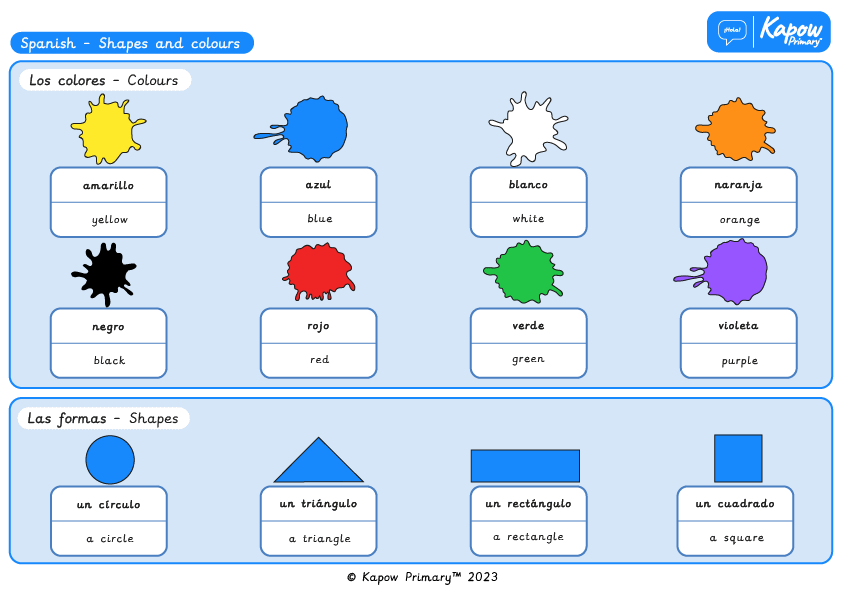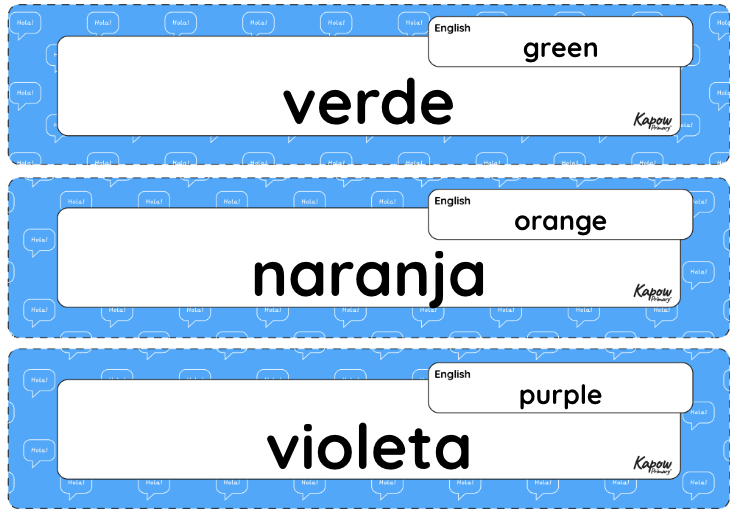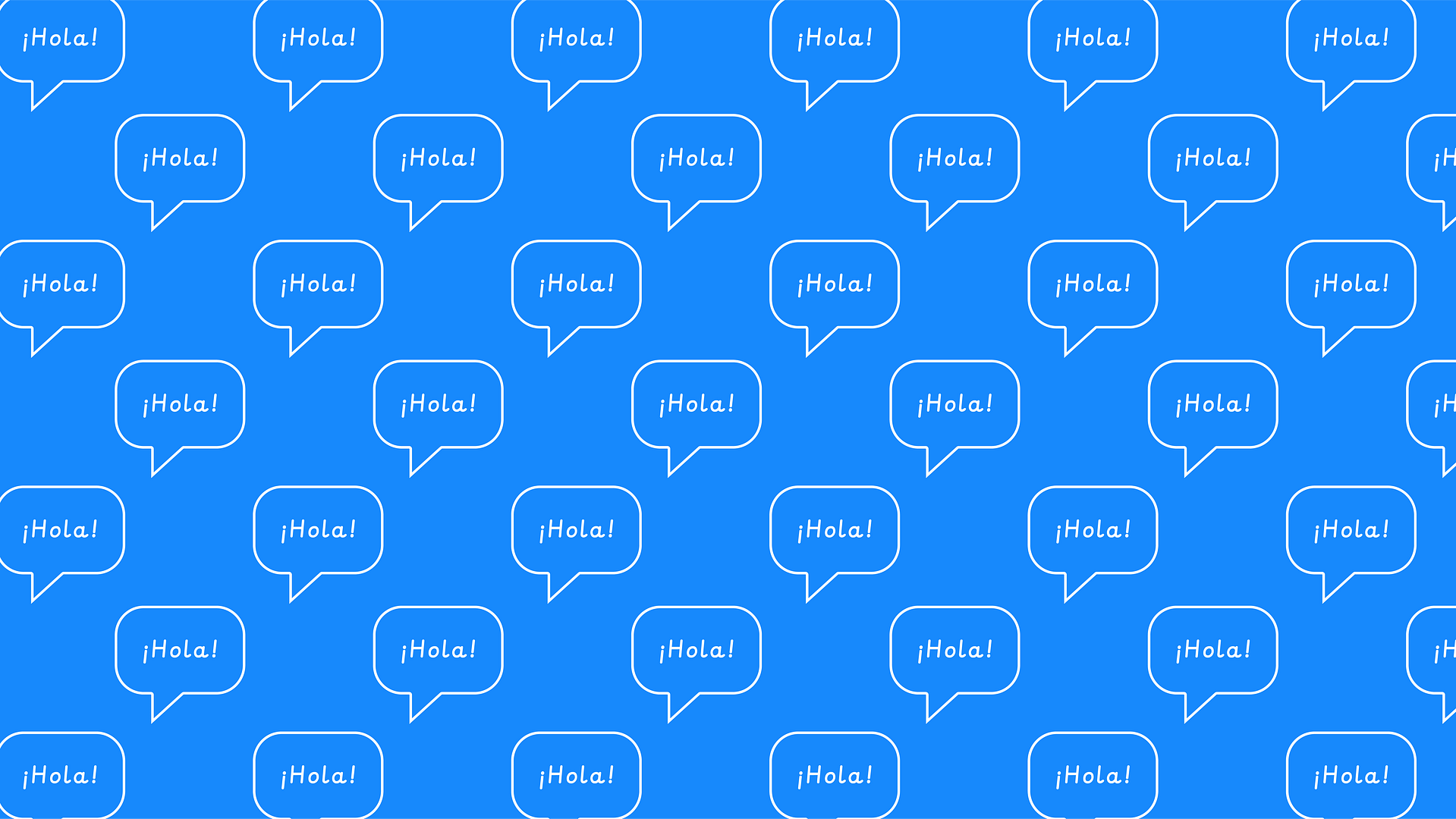Unit 2: Shapes and colours in Spanish
Use this unit hub to inform your medium-term plan and navigate to related resources.
The Curriculum and Assessment Review final report has been released. We’re reviewing the recommendations and planning for future updates. Learn more
Unit outcomes
Pupils who are secure will be able to:
- Point to a colour that matches a spoken word.
- Say the names of some colours in Spanish.
- Read and recognise descriptive phrases and match them to an image.
- Identify shapes with their name and colour in Spanish, placing the colour adjective after the noun.
- Write or copy shape and colour names with accuracy.
- Recall and produce some key vocabulary from memory.
Suggested prior learning
Unit 2: Spanish numbers and ages
Get startedLessons
Y3/4 (B): Lesson 1: Colours
- To recognise and name some colours in Spanish.
Y3/4 (B): Lesson 2: Describing shapes
- To begin to describe shapes using colour adjectives.
Y3/4 (B): Lesson 3: Gaudí mosaics
- To create and practise descriptive phrases orally.
Y3/4 (B): Lesson 4: Tile hunt
- To read and recognise descriptive phrases in Spanish.
Y3/4 (B): Lesson 5: Tiles of the Alhambra
- To write a design brief using shape and colour vocabulary.
Y3/4 (B): Lesson 6: Tile designs
- To create a short presentation using descriptive phrases.
Key skills
Key knowledge
Related content
Unit resources

Knowledge organiser – Spanish Y3/4 (B): Shapes and colours in Spanish
Aimed at pupils, two pages providing key facts and definitions from the unit ‘Shapes and colours in Spanish’.

Vocabulary display – Spanish Y3/4 (B): Shapes and colours in Spanish
A display version of the vocabulary from the unit ‘Shapes and colours’.

Translations: Shapes and colours
Translations of key texts and transcripts from resources in this unit.
Cross-curricular opportunities
Mathematics: Geometry – properties of shapes: Compare and sort common 2-D and 3-D shapes and everyday objects.
Art and design: Great artists, architects and designers in history; Develop a wide range of art and design techniques in using colour, pattern, texture, line, shape, form and space.
Physical education: Take part in outdoor and adventurous activity challenges both individually and within a team.
Design and technology: Use research and develop design criteria to inform the design of innovative, functional, appealing products that are fit for purpose, aimed at particular individuals or groups; Generate, develop, model and communicate their ideas through discussion, annotated sketches, cross-sectional and exploded diagrams, prototypes, pattern pieces and computer-aided design.

